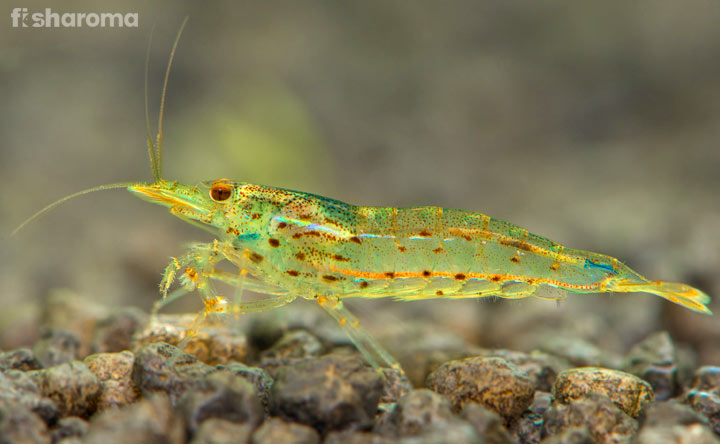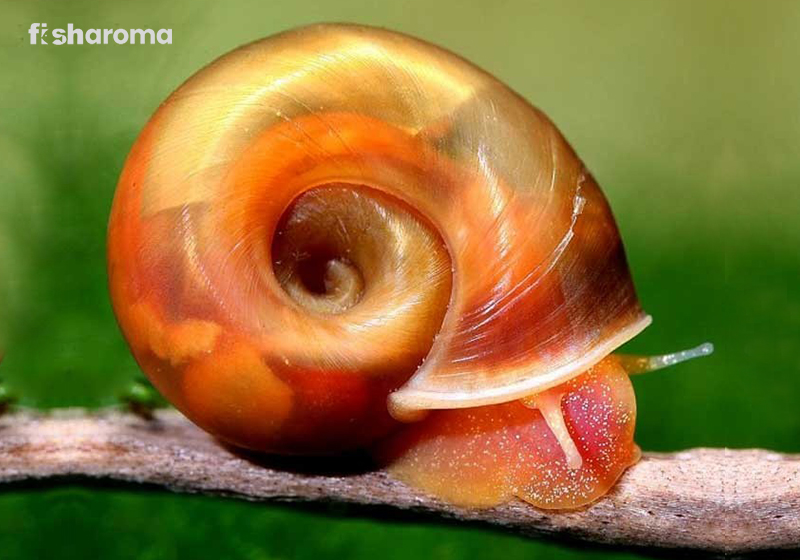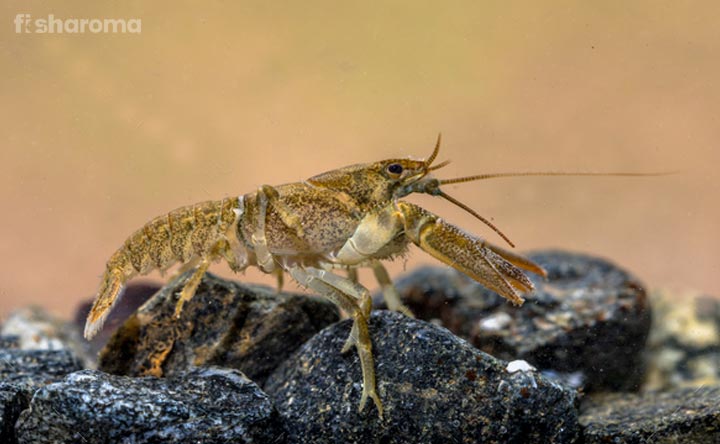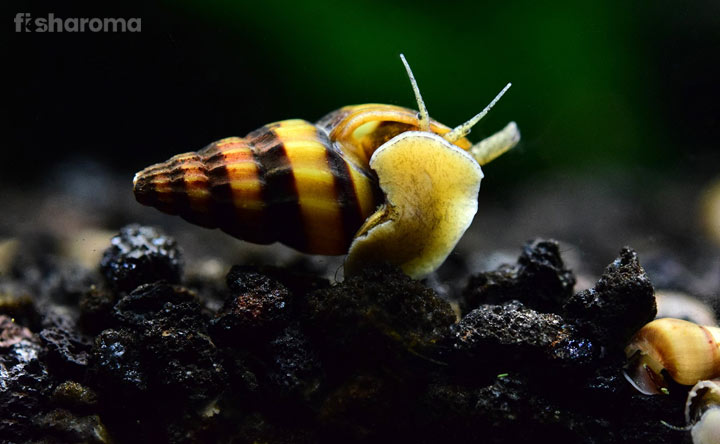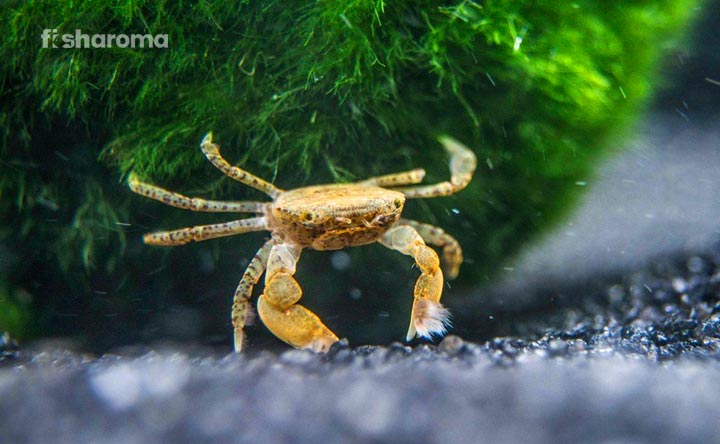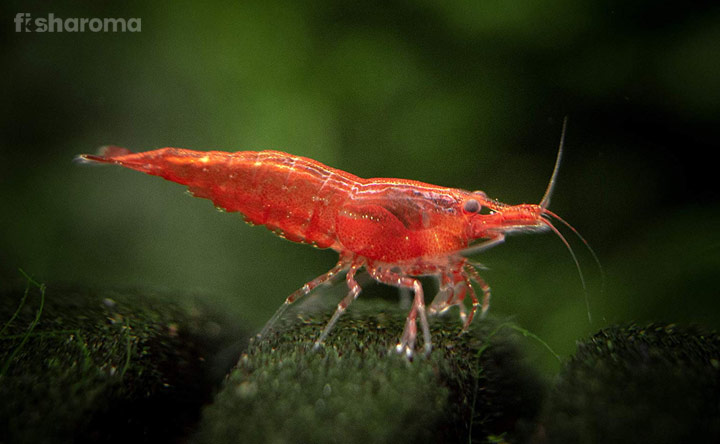What do Tadpoles Eat? – Know What to Feed Tadpoles
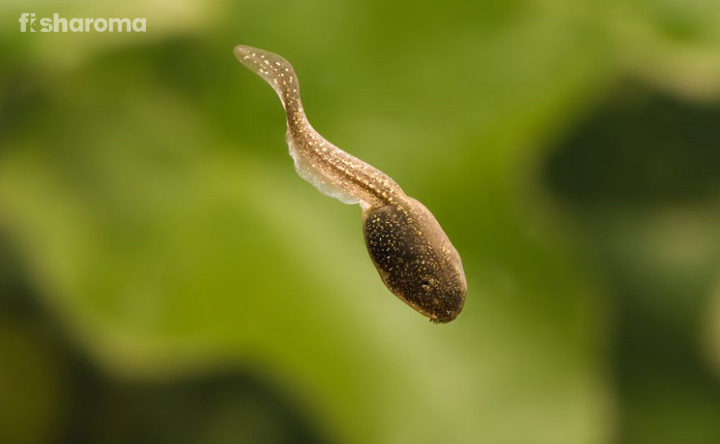
- What do Tadpoles Eat?
- Aquatic Plants and Algae
- Leafy Vegetables
- Fruits and Vegetables
- Various Herbivorous Meals
- Calcium Elements
- Fish Flakes
- Omnivorous Meals
- High Protein Foods
- What do Tadpoles Eat in Aquarium?
The life-cycle of frogs is definitely very interesting to read, and seeing this life-cycle in the aquarium is now a passion among many fish keepers. A Tadpole takes almost 12 weeks to become a frog, and they need intense care and proper diet during these 12 weeks.
Fish keepers often find difficulties at the time of feeding the Tadpoles because, unlike the newly hatched fries, the food of a Tadpole keeps changing in their growth weeks.
You need compact knowledge about the diet of Tadpoles. Being extra careful and selective while feeding your Tadpoles will help them grow into a healthy frog. Read the article till the end to know what do Tadpoles eat.
What Do Tadpoles Eat?
Tadpoles generally live on a diverse diet, and you will get several food options available for them. But, indeed, all the foods are not equally nutritious for the Tadpoles. So, the fish keepers search for the healthiest for their aquarium Tadpoles. Here we are suggesting the top 8 healthiest food options for the Tadpoles. Have a look at these Tadpole foods:
Aquatic Plants and Algae
Aquatic plants are considered as the primary meal of the Tadpoles, but you need to be selective at the time of choosing the aquatic plants. Hornwort and Cryptocoryne can help them to grow healthy. Also, try to keep Java Moss and Java Fern in your tank, which will give a place to hide to these Tadpoles.
Fast-growing plants like Duckweed and Sagittaria Subulata will be good for the Tadpoles as they eat more often. They will consume aquatic plants very fast, and you need to make sure that there will be no lack of plants. They will have an appetite for floating weeds and grasses too.
Tadpoles prefer to scrape and eat the algae from the bottom of the aquarium. Make sure that there are not excessive algae as the Tadpoles will keep eating and be obese. More than one layer of algae in the aquarium base is not at all acceptable.
Nutrients
These green leaves will supply vitamin A, C and K, and minerals. These leaves contain fibers, which are also good for the growth of the Tadpoles.
Leafy Vegetables
They gradually intake the leaves on which they live, and these leaves supply essential nutrients to their body. Along with that, kale, lettuce leaves, and spinach leaves will also be healthy food options for Tadpoles. These leaves can be supplied as fresh and also as boiled. You can boil the leaves for 5 minutes or until they become soft. They are also seen to consume the falling leaves of the aquatic plants too.
Nutrients
The essential minerals like iron and calcium are supplied through these leaves. Lettuce leaves also help in the digestion process of these Tadpoles to keep them active.
Fruits and Vegetables
Broccoli, pea, green beans, zucchini, spinach, broccoli, green pepper, and lettuce will serve the Tadpole well. These vegetables can be fed both as fresh and as boiled. Chop these veggies in small pieces and feed them twice a day. Small pieces of fruits can also be served to the Tadpoles. Among the fruits, you can try green grapes.
Any homegrown green vegetables and fruits which are free from pesticides can be fed to the Tadpoles. You can use frozen vegetables too for the Tadpoles. You can fry the small slices of the vegetables as well as the boiled vegetables for them. For boiled peas, you can crush it or remove its skin.
Try to avoid celery from the diet of the Tadpoles as the chance of spraying pesticides in it, is very high.
Nutrients
The Tadpoles will get the essential vitamins (A, B, C, and K) from the boiled foods. Vitamins of green veggies keep them active. Fresh Fruits will make them energetic and give them a stronger digestion power. Fruits also contain multivitamins, which will later break in carbohydrates and keep the Tadpoles healthy.
Various Herbivorous Meals
For the better health of Tadpoles, you can feed Spirulina Meals to them. Outside flakes and meals are much needed for Tadpoles because the aquatic plants and algae sometimes cannot provide everything they need.
You can try Flakes or AlgaeWafers, Algae Discs, and Seaweed Meal to see the visible growth of the Tadpoles. Along with this, you can rely on instant foods like Tropical Algae Wafers for Bottom Feeding Herbivorous Fish, Tropical Flakes, and Ecopond (Veggie) Tadpole Food for the Tadpoles. Lucky Reptile Quappo Food is also a popular instant food among the store-bought foods for the Tadpoles.
Nutrients
These meals supply the energy to the Tadpoles so that they can continue their playful activities throughout the day. They will get Thiamine and Biotin from the packaged foods. Algae wafers and discs will supply protein to the Tadpoles.
Calcium Elements
These are much-required food items for the Tadpoles in their growth period. You can add a few drops (2 drops per liter) of liquid calcium in the aquarium. Also, you can place a cuttlebone in the aquarium so that the level of calcium remains steady.
Nutrients
The need for calcium in every living being is undeniable, and the Tadpoles are not an exception. Calcium will help in the overall development of the Tadpoles.
Fish Flakes
Fish food flakes are the high protein meals for the Tadpoles, and these contain high protein. It helps them in fast and healthy growth. Cobalt Aquatics 34291 Frog & Tadpole Minis will be an ideal flake for them. AQUARIAN Complete Nutrition, Frog & Tadpole sinking pellets are some of the instant flakes for the Tadpoles. You can get all these flakes easily in any store.
Nutrients
All these food items contain Vitamin, Thiamine, and Lecithin, which promote a healthy life to the Tadpole. Along with that, these food items supply energy due to the presence of carb in them. Minerals and fibers will be supplied from flakes and meals.
Omnivorous Meals
Zoo Med Aquatic Frog & Tadpole Food is the most popular instant foods among the store-bought foods for the Tadpoles. Most of these instant flakes contain brown rice, dried yeast, white gluten, and various protein and calcium elements. It will allow the Tadpoles to be healthier.
Some other store-bought foods like Cobalt Aquatics 34291 Frog & Tadpole Minis will be ideal for them. AQUARIAN Complete Nutrition, Frog & Tadpole sinking pellets are some among the instant flakes for these Tadpoles. These store-bought foods contain the goodness of algae and vegetables as well as the protein of fish flakes.
At the time of selecting the meals, check whether it is for the early stage of Tadpoles, or it is for the late stages of Tadpoles. Also, check the elements included in the meals.
Nutrients
They will get Thiamine from the omnivorous fish meals. These meals make the internal buildup of the Tadpoles stronger as the gills of the Tadpoles are not fully built at the early stage. The omnivorous meals are generally supplied to the Tadpoles on the 2nd or 3rd week of hatching. These omnivorous meals will help the Tadpoles to have an appetite for the animal proteins, which will be supplied to them after the 3rd week.
High Protein Foods
These foods help a lot in the metamorphosis of the tiny Tadpoles to mini frogs. Live and dead insect and fish protein and egg protein are the mandatory requirements of the adult Tadpoles. Hard-boiled egg yolk and homemade fish food will also be good choices of food for them. You just need to crumble the yolk and spread evenly on the tank surface.
For the insect protein, you can start with dead flies, shrimps, fruit flies, dead insects, fish food flakes, and live bugs.
Among the live foods, Aphids, fish food pellets, Black worms, Bloodworm, frozen fish, Brine Shrimp, and insect larvae are the most popular non-veg food choices for these Tadpoles. Frozen Foods (insects) are also a much-preferred meal of them. Additionally, you need to opt for Mealworms, small fish (both dead and live), and Crickets (frozen) in their diet.
These foods are for the adult Tadpoles, and they will try to catch their food, especially live foods. They are always busy in some activities, and they swim in the entire aquarium. Make sure you create enough hiding places from where they can jump on the live foods and catch. These hidden places will reduce the stress of the Tadpoles, and they will not tend to reject foods.
Try to avoid any meat for the Tadpoles as their intestines are not properly buildup to digest meat.
Nutrients
These live foods supply protein and vegetables will supply the calcium, iodine, and iron to the Tadpoles. As a result, the bones of the Tadpoles become stronger. Egg-yolk and all the dead flies and insects contain high protein. These foods appear to be delicious as well as very nutritious to the Tadpoles. Egg yolk also helps in their digestion process.
These are the foods the frogs generally intake, so by feeding these live foods to the Tadpoles, you are actually helping them to have an appetite for these foods. If you are planning to skip the live foods from the diet of your Tadpoles, they will be weak. Most importantly, these live foods are used to feed on the adult Tadpoles, and their physical build-up is more and more complicated. Live foods will give strength to the Tadpoles to cope up with their physical changes.
Now, let’s focus on 3 very obvious questions…
What do Tadpoles Eat in Aquarium?
So, these are the food options for the Tadpoles when you are keeping them in an aquarium. If you bring a hatched Tadpole for your aquarium and plan to release it to its natural habitat before becoming an adult frog, you need to be extremely careful about their diet. In an aquarium, the Tadpoles generally start with a herbivorous diet and become omnivorous for a certain time and live on a carnivorous diet for the rest of their lives.
How Much and How Often to Feed the Tadpoles in Aquarium?
You have to feed the Tadpoles every single day; otherwise, they will starve. Also, feed every day at the same time. The quantity for all the instant food has to be one pinch only. For vegetables and fruits, do not give more than two small cubes in a day. If you find that the food is uneaten, it is a sign that the quantity was excessive. Small chunks of boiled food will also be alright for the Tadpoles. Generally, one or two meals a day will be alright for the Tadpoles as they will keep eating algae.
What Do Tadpoles Eat In The Wild?
Tadpoles in their natural habitat eat whatever they come across, and they are omnivorous from the second week of their birth. Adult frogs lay eggs on the leaves; so, Tadpoles stick on to the leaves and eat those leaves. They are capable of finding foods, and gradually, they learn to catch the small insects and fly, which supply protein and calcium to them help in their growth. They live on algae only if they cannot find the small animals or insects (dead and live) and water striders to eat.
Well, these are the foods, but there is a little twist! Unlike the small fries, you cannot feed the same food to the Tadpoles throughout their growth. Know this in detail…
Change of Food in Different Stages of Growth
A close look at the growth process of the Tadpoles will reveal seven stages between hatching and becoming a short-tailed mini frog. A Tadpole cannot live on the same food in these seven stages. A diverse diet is mandatory for their healthy growth.
Stage 1: Tadpoles Clinging To Water Plants
At the initial stage, the Tadpoles cling in the aquatic plants and eat the plants. As they mainly prefer the no-current areas, they get excessive algae to eat as well. You need to clean up the algae at least once a week.
Stage 2: Tadpoles with External Gills
After 4 to 5 days, their external gills are formed, and they become the look-alikes of the small fries! They start swimming, and adequate energy is required from the foods. During this stage of growth, along with plants and algae, vegetables can be fed. Along with that, you can try the herbivorous meals on the alternative days.
Stage 3: Tadpoles with Internal Gills
From the 10th day, you will be able to see the internal gills. At this stage, herbivorous meals, along with leafy veggies like spinach, kale, and lettuce, will be required. Tadpoles are seemed to be very selective at this time, and they leave the foods uneaten more often. You have to be a good observer at this stage to see whether the Tadpoles have consumed the food (partly or full) or not. The Tadpoles must not starve. You have to try different food items almost every day for the Tadpoles. Also, they are stressed due to the change in their body. Make sure the level of calcium in the water is alright at this stage.
Stage 4: Tadpoles with Operculum
After 2-3 days, you will see that the internal gills got a covering called Operculum, and it protects the gills from outside attacks. In simpler words, the buildup of Tadpoles becomes more and more complex at this stage. Boiled vegetables are mandatory at this time. Along with this, you can start the omnivorous meals too. You need to get high quality instant omnivorous flakes for the growth of your Tadpoles. Continue this for seven weeks until you see the back legs.
Stage 5: Tadpoles with Two Legs
Back legs make the Tadpoles twice sporty, and they need a high protein diet. Include the egg yolk, dead insects, and omnivorous meals. At least once a week fed them with fruit and fresh or boiled veggies. You will be able to see them climbing and staying out of water for a few seconds.
Stage 6: Tadpoles with Four Legs
Forelegs appear on the 12th week, and at this time, their tails start to shorten by this time. They will try to come out of water and prey. The Tadpoles are adults now, and you must include live foods at this stage as they are now carnivorous. Also, the Tadpoles will feel stressed very often due to excessive activities, and live foods will reduce that stress.
Stage 7: Tadpoles with Shorter Tails
After a few days of appearing the forelegs, the formation of lungs will be completed, and their tails become smaller. Also, their legs will be stronger, and they are capable of breathing out of water. In short, and they are ready to be amphibians. At this point, outside foods are not required as they live on the foods stored in their tails.
Summary
So, if you want to see the transition of the Tadpoles in your freshwater aquarium, it is not going to be that difficult. But, yes, you need to make some adjustments in your aquarium by placing some healthy aquatic plants, and of course, you have to arrange a proper diet for the Tadpoles. They are known to hop a lot, which might affect the décor of your aquarium. For a change, you can definitely keep the Tadpoles and witness their metamorphosis.
More about the Dietary Habits of the Fish
If you want to expand your knowledge of fish foods, you simply cannot miss the following ones.
- Know All About Fish Food: Know different types of fish and their dietary habits.
- Everything About The Foods Of Crayfish: If you want some change in your aquarium, try Crayfish, and here is the diet of the most popular Crayfish.

